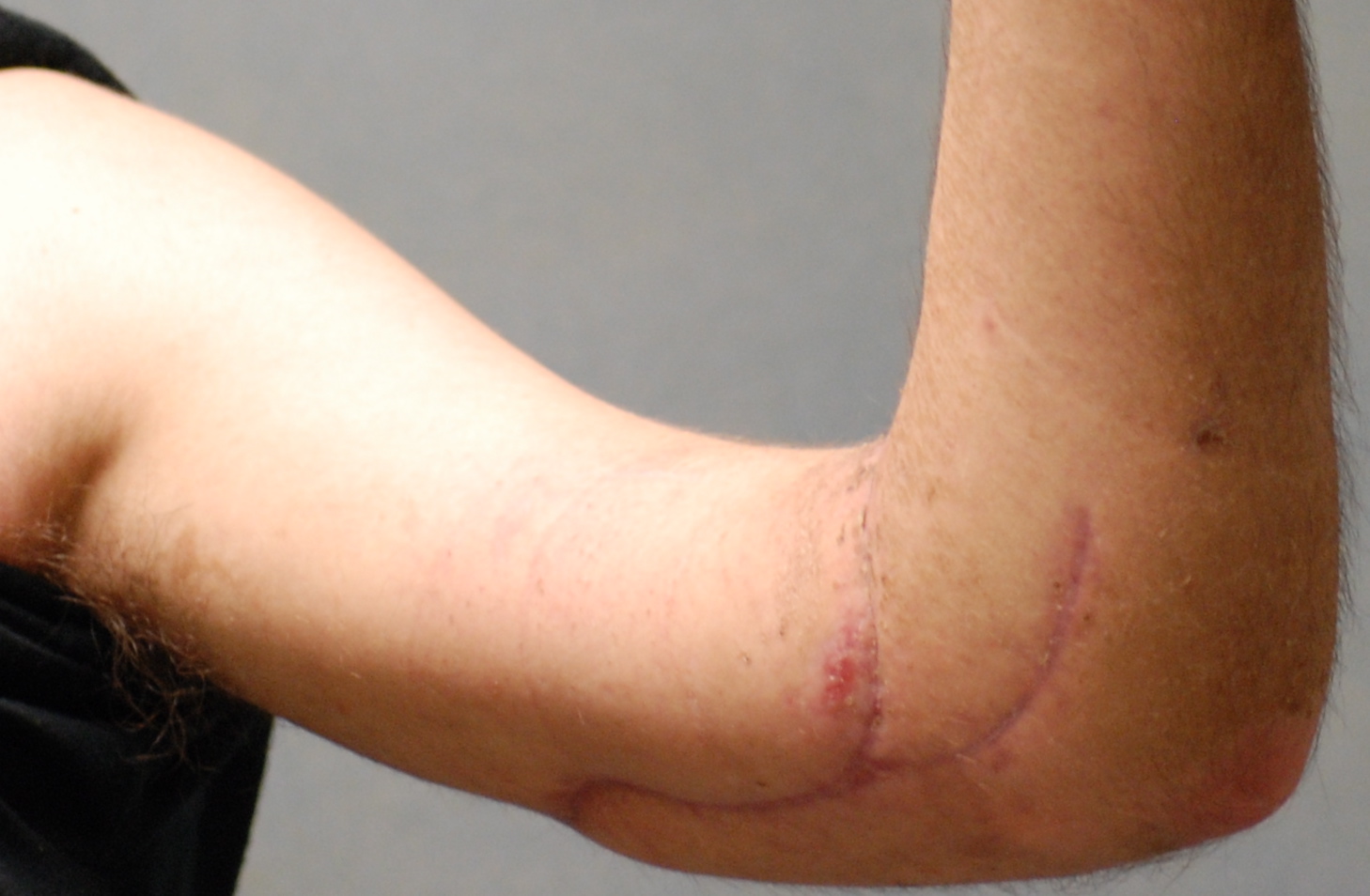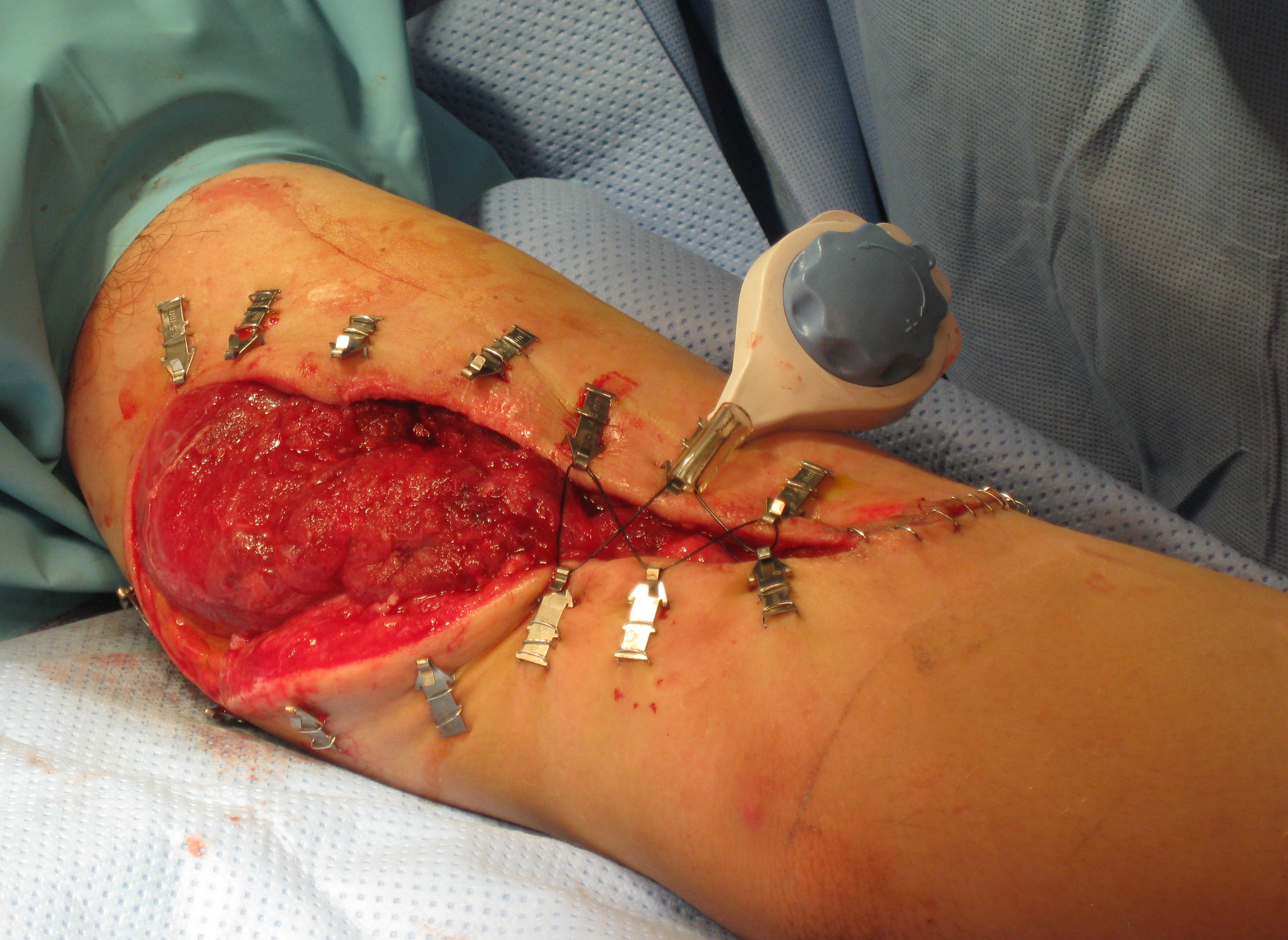|
Back to 2011 Program
Management of Massive Soft Tissue Injury of the Extremity using External Tissue Expansion
Gabriel F. Santiago, M.D., Patrick L. Basile, M.D., Robert T. Howard, M.D., Mark Fleming, D.O., Romney Andersen, M.D., Ian L. Valerio, M.D., M.S., M.B.A..
National Naval Medical Center, Bethesda, MD, USA.
Background: Blast exposure is a common cause of soft tissue injury (STI) on the battlefield; with the extremities often critically involved [1]. Blast exposure results in complex injuries involving bone, neurovascular structures, and soft tissue. The degree of STI often requires the use of advanced reconstructive methods, e.g. autologous tissue transfer, to achieve adequate wound coverage [2]. The use of external tissue expansion has been utilized by our institution to significantly reduce wound burden in these patients.
Methods: The authors present an early series of 15 patients who suffered massive extremity STIs and were treated with an external tissue expansion system (Dermaclose ™). Outcome measurements included time to definitive closure and method of definitive wound closure. A six patient subset of this group was prospectively analyzed to determine measurements including initial wound surface area, percentage reduction in wound surface area, and related complications.
Results: Overall time to wound coverage ranged from 1-17 days, with mean time to wound coverage being 6.5 days. Of the 15 patients included in the series 13 (86.6%) were able to undergo delayed primary closure, while 2 required split thickness skin grafting for closure. In the 6-patient prospective series, wound surface area (WSA) initially ranged from 20.25 cm² to 1031.25 cm². Mean wound size was 239.75 cm². Decrease in WSA ranged from 36% -93% of the initial WSA. Mean decrease in WSA was 67.89%. No major complications were identified in this 15-patient series.
Conclusions: There is a significant role for the use of external tissue expansion in the management of extensive STI. External tissue expansion systems have been used successfully as an adjunct in the treatment of complex STI resulting from war trauma at the National Naval Medical Center. The authors propose an algorithm for the use of external tissue expansion systems to reduce donor site morbidity, while at the same time achieving successful wound closure.
References:
1. Shen-Gunther et. Al..Trends in Combat Casualty Care by Forward Surgical Teams Deployed to Afghanistan. Mil Med,176, 1:67, 2011
2. Yazar et al. One-StageReconstruction of Composite Bone and Soft-Tissue Defects in Traumatic Lower Extremities. . Plastic and Reconstructive Surgery 114(6), 2004, pp 1457-1466


Back to 2011 Program
|







